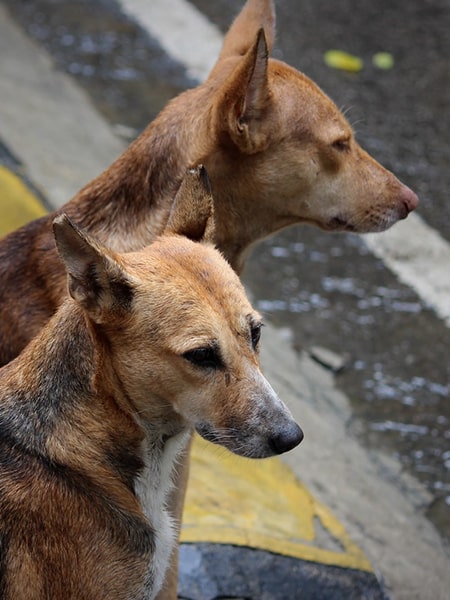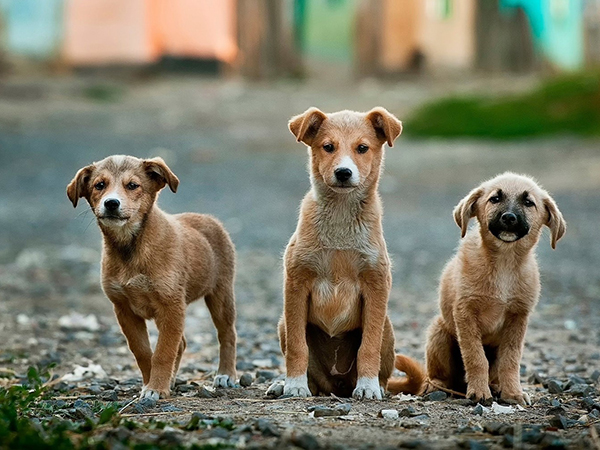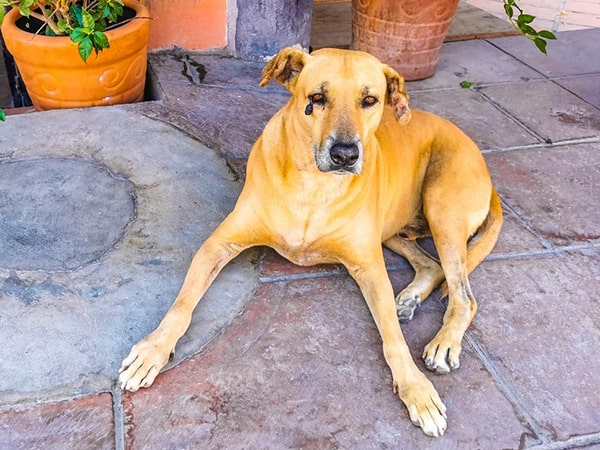This post is also available in:
Français (French)
Español (Spanish)
Adopt Mexican dogs have become trendy in the USA and Canada.
Both Today’s Veterinary Business magazine and the Washington Post have stated in articles analyzing the dog shortage in the US that the US had a demand for 8.1 million dogs in 2019. That was 5.5 million dogs, less than the number of dogs adopted from animal shelters. Though not the only reason, that shortfall led some people to adopt Mexican dogs.
Shortfall calculations came from The humane society that established that in a 2017-2018 survey, there were 74.4 households with pets, and in 2020-2021, approximately 90.5 million pets were living in US households. This statistic shows that the demand for dogs is increasing considerably in the USA.
increasing considerably in the USA.
The dog shortage in the US (Canada, too) is due to the following:
- Spay and Neuter: the majority of pet owners have their dogs spayed or neutered (which is excellent for avoiding disease and unwanted pregnancies)
- Puppy Mill Bans: most states have banned puppy mills
Mexico has the highest number of stray dogs of all Latin American countries. It is estimated that 20 million stray dogs, with thousands being killed by electrocution each month. There is a huge need and opportunity to adopt Mexican dogs.
Mexico faces unique challenges in helping stray dogs find loving homes. Addressing these challenges requires dedicated efforts from rescue organizations, volunteers, and prospective adopters. Let’s explore two significant challenges encountered in the process:
Limited Resources: Overcoming Obstacles in Rescue Efforts
Rescue organizations in Mexico often operate on limited budgets and face resource constraints. The sheer number of stray dogs in need of assistance can be overwhelming. These organizations struggle to provide adequate shelter, food, medical care, and sterilization services to all the dogs in their care. There needs to be more funding and infrastructure to meet the needs of the growing stray dog population.
Rescue groups rely heavily on donations, grants, and support from compassionate individuals to overcome these obstacles. Fundraising efforts, partnerships with international organizations, and community involvement are crucial in expanding resources for Mexican stray dogs. By raising awareness and contributing to these initiatives, Americans and Canadians can make a significant difference in improving the lives of these animals.
Adoption Obstacles: Navigating the Process with Patience and Persistence
Adopting a Mexican stray dog may involve certain obstacles that potential adopters should be aware of. While rescue organizations strive to make the adoption process as smooth as possible, some factors can present challenges:
- Geographical Distance: The geographical distance between Mexico and USA and Canada can be a logistical challenge. Prospective adopters must consider transportation arrangements for their adopted dog, whether it involves flying the dog back or hiring specialized transport services. Arranging this can incur additional costs and require careful planning. If you adopt from an organization like Bone Voyage Dog Rescue, we fly the dogs to you, so you don’t have to worry about that.
- Importation Requirements: Adopting a Mexican dog means navigating the importation requirements set by the adopter’s home country. These requirements may include health certifications, vaccinations, and other documentation to ensure the dog’s safety and compliance with local regulations. Understanding and fulfilling these requirements is crucial for a smooth adoption process. If you adopt through a rescue like us, we handle all the hassles for you, from the international paperwork to all the medical information needed.
Despite these obstacles, the reward of providing a forever home to a Mexican stray dog far outweighs the challenges. With patience, persistence, and a commitment to making a difference, individuals can successfully navigate the adoption process and give these deserving dogs a second chance at a happy life.
By understanding and actively addressing these challenges, Americans and Canadians can play a vital role in helping Mexican stray dogs find loving homes and contribute to the overall welfare of these animals.
The Rewards and Responsibilities of Adopting a Mexican Stray Dog
Training: Shaping Behavior and Building a Strong Bond
When you adopt Mexican dogs from the street, training plays a crucial role in shaping its behavior and building a solid bond between the dog and its new family. Stray dogs may have experienced hardships and lacked proper socialization, making training essential for their successful integration into a new home.
Positive reinforcement training methods, patience, and consistency, are essential when working with Mexican stray dogs. Basic obedience commands, leash walking, and house training are crucial aspects to focus on. Training not only helps the dog become well-behaved and adaptable, but it also strengthens the bond between the dog and its adopter.
Training sessions should be conducted in a calm and structured environment, allowing the dog to learn at their own pace. Seek guidance from professional trainers or enroll in obedience classes to ensure the best outcome for both the dog and the adopter. The adopted Mexican stray dog can flourish and become a beloved family member with time and effort.
Adopting from Animal Rescue Groups: Finding Your Perfect Match
Animal rescue groups in Mexico, such as BVDR, are dedicated to finding suitable homes for their rescued dogs. These organizations are vital in connecting potential adopters with the proper canine companions. Here are some key points to consider when adopting from animal rescue groups:
- Adoption Process: Each rescue group may have its adoption process, including application forms, interviews, and home visits. Following their guidelines and providing accurate information is essential to ensure successful adoption.
- Matching Process: Animal rescue groups strive to find the best match between adopters and dogs. They consider factors such as the adopter’s lifestyle, family situation, and experience with pets to ensure compatibility and a long-lasting relationship.
- Medical Care and History: Rescue groups provide necessary medical care to their dogs, including vaccinations, spaying/neutering, and treatment of existing conditions. They also share information about the dog’s background, temperament, and behavior to help adopters make informed decisions.
- Support and Guidance: Rescue groups often provide post-adoption support, including advice on training, behavior issues, and general care. They are valuable resources for adopters, ensuring a smooth transition and ongoing support throughout the dog’s life.
By adopting from reputable animal rescue groups, individuals can find their perfect match while contributing to the mission of saving and rehoming Mexican stray dogs.
Conclusion: Making a Positive Impact Through Adoption
Adopting Mexican stray dogs not only brings joy and companionship to individuals and families but has a significant positive impact on the lives of these deserving animals. By providing them with loving homes, adopters play a vital role in the following:
- Saving Lives: Each adoption opens up space in rescue organizations to keep more stray dogs from the streets, giving them a chance for a better life.
- Reducing Stray Dog Population: By adopting and spaying/neutering their pets, individuals contribute to the long-term solution of reducing the stray dog population.
- Promoting International Animal Welfare: To adopt Mexican dogs from rescue organizations raises awareness about the global issue of stray dog overpopulation and the importance of responsible pet ownership.
- Building Stronger Communities: The act of adopting and caring for a Mexican stray dog fosters a sense of compassion, empathy, and community involvement.
By understanding the challenges, responsibilities, and rewards when you adopt Mexican dogs, Americans and Canadians can make a lasting difference in these animals’ lives while enriching their lives with the unconditional love and companionship that dogs bring.
Bone Voyage Dog Rescue focuses on sending wonderful Mexican dogs to adopters in the US and Canada, where loving families are waiting. Bone Voyage complies with all US and
Custom requirements as to the health of the dogs, and they partner with rescue groups in the US and Canada. Also, Canadians and Americans who adopt dogs directly from us pick up their adopted Mexican dog at their airport.
With millions of stray dogs dying in Mexico and two northern neighbors looking for dogs, what could be a better partnership for all, especially the dogs?
Frequently Asked Questions
Can You Adopt Dogs from Mexico?
Yes, it is possible to adopt dogs from Mexico. Many rescue organizations in Mexico work tirelessly to find suitable homes for stray dogs and facilitate international adoptions. Bone Voyage Dog Rescue can undoubtedly help you with that.
How Much Does it Cost to Adopt a Dog in Mexico?
Adoption fees can vary depending on the rescue organization and the specific dog. Generally, adoption fees in Mexico are higher than in the USA because of the transportation costs. Adopting Bone Voyage costs from 400USD-600USD
Can I Take a Stray Dog from Mexico?
Taking a stray dog directly from Mexico by yourself can be challenging. Being fluent in Spanish would help, as you would have to take the dog through all the veterinary required processes and have out all the necessary documents; also, you will need a place to keep the pet before you travel or send the pet. Working with a reputable rescue organization to ensure a legal and safe adoption process, such as Bone Voyage Dog Rescue, is advisable.
Can I Buy a Dog from Mexico and Bring It to the USA?
Buying a dog to bring it to the USA is not recommended, as it may contribute to unethical practices such as puppy mills or illegal trafficking. Adopting a dog from a reputable rescue organization in Mexico is advisable to ensure the animal’s welfare.
Is it Hard to Bring a Dog from Mexico to the USA?
Bringing a dog from Mexico with Bone Voyage Dog Rescue is easy; we handle all the details and nuances. But doing it with no help can be very challenging as the USA needs to comply with importation requirements set by the government. These requirements typically include health certifications, vaccinations, and proper documentation. While the process can have some complexities, it is manageable with adequate preparation and adherence to regulations.






